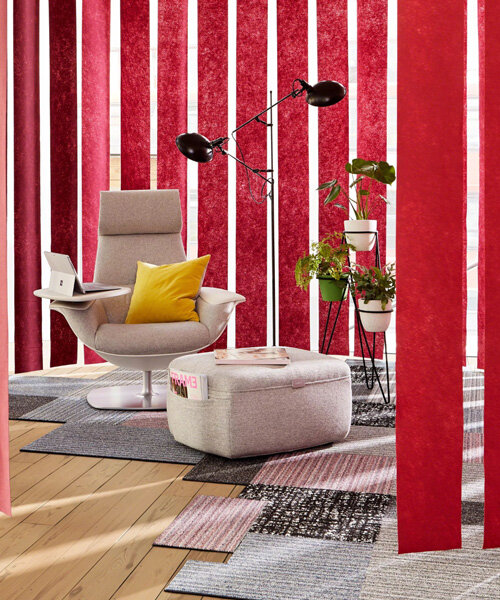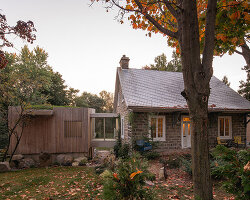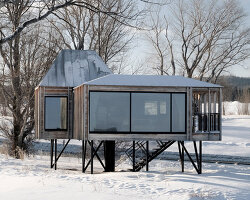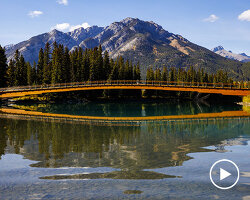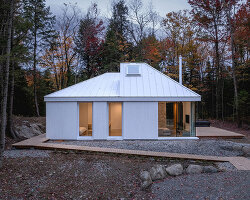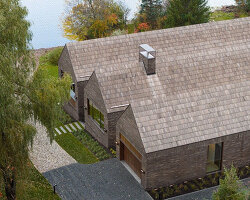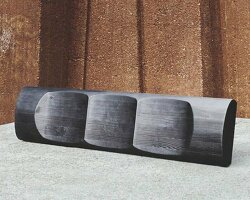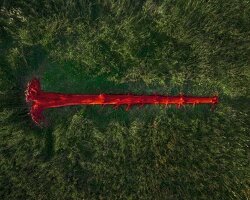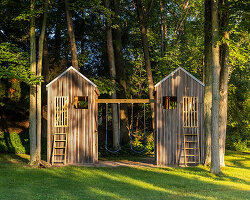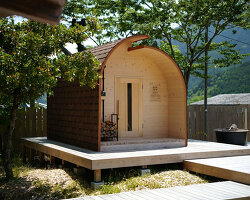regan appleton crafts food storage unit and gathering spot
Located in the backcountry of Canada’s British Columbia, the Deadwood Bear Cache stands atop a rocky outcrop on an isolated island. The site, at 49°55 North and 123°06 West, initially became a popular spot for friends seeking solace between lockdowns of the pandemic, which prompted designer Regan Appleton to consider how to create an enjoyable camping experience in the wilderness while protecting the environment. Shaped from reclaimed pine, cedar shingles, and deadwood, the natural vessel serves as both a functional storage unit for foodstuffs, protected from hungry woodland creates, and a communal gathering space for remote campers. At the end of its lifecycle, the structure disintegrates and returns back to the earth
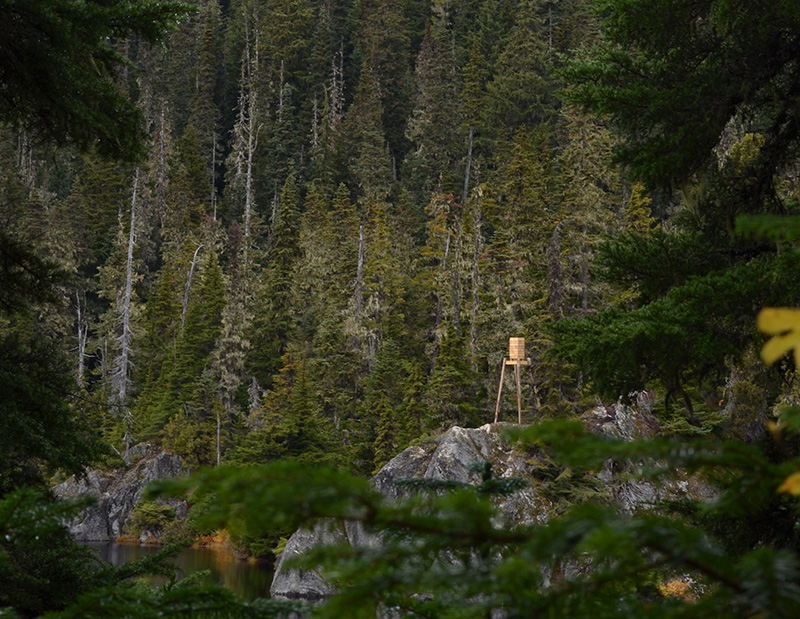
all images courtesy of Regan Appleton
natural and cyclical, the cache returns to the ground over time
Drawing inspiration from the rich history of indigenous and modern caches (French for ‘to hide’) in North America, Regan Appleton’s Deadwood Bear Cache follows the tradition of constructions that elevate perishables 12 feet above the ground. The designer’s concept, on one hand, echoes the uneasy, contemporary malaise experienced during the pandemic, nodding to the apocalyptic visions of H.G. Wells. However, its functionality subverts the dystopian aesthetic as a device that enables sustenance and communal gathering.
The main vessel is crafted from pine and cedar shingles, hiked into site and ferried to the island via stand-up paddleboard. While the legs are harvested on site from deadwood laid about the forest floor. Four tree trunks were stripped back, upturned to form legs, and treated with oil to protect against the elements. Eventually, as the cache weathers over time, it will decay and be consumed back into the forest.
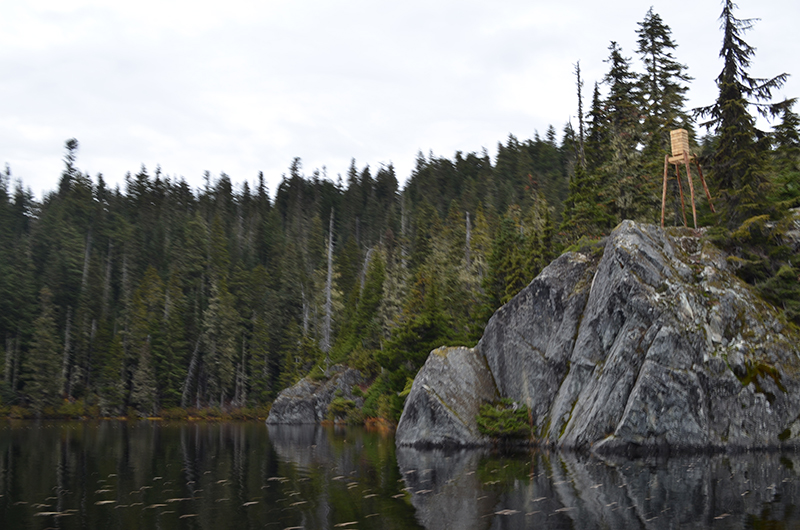
the Deadwood Bear Cache stands atop a rocky outcrop
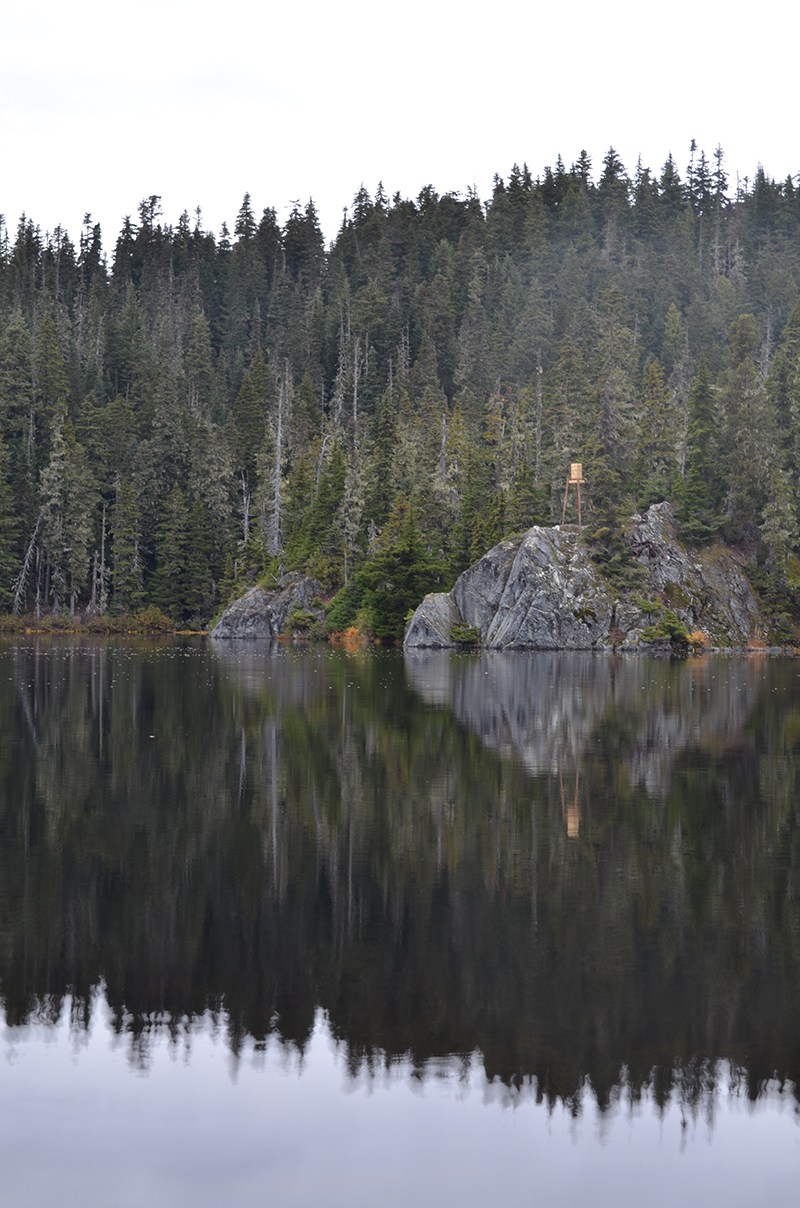
lcated in the backcountry of Canada’s British Columbia, along the banks of a remote forest
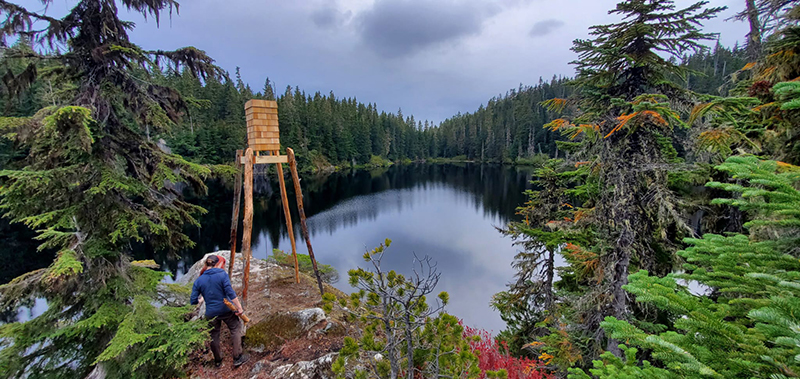
the main vessel is crafted from reclaimed pine and cedar shingles, while local deadwood shapes the legs
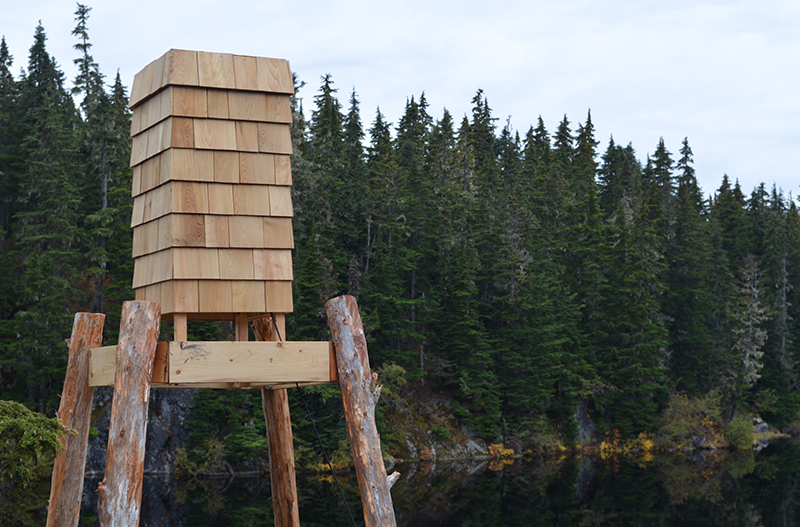
a functional food storage unit and a communal gathering space for remote campers
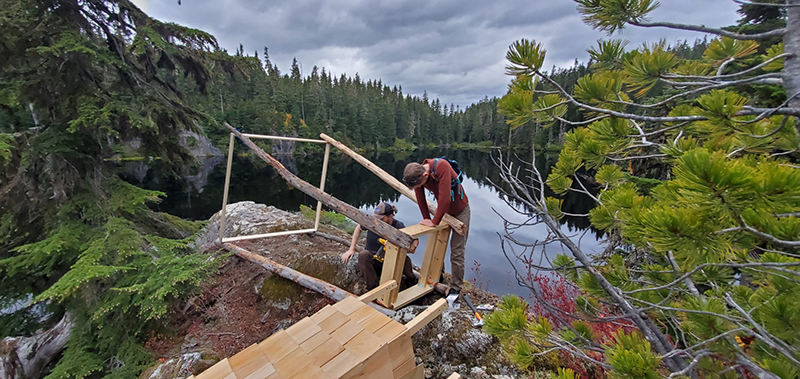
the team assembled the deadwood trunks on site
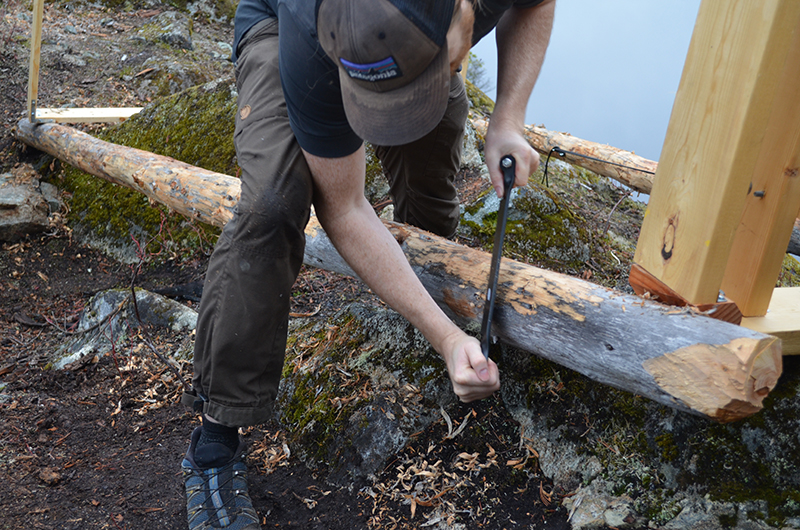
bark was stripped back, upturned to form legs, and treated with oil to protect from the elements
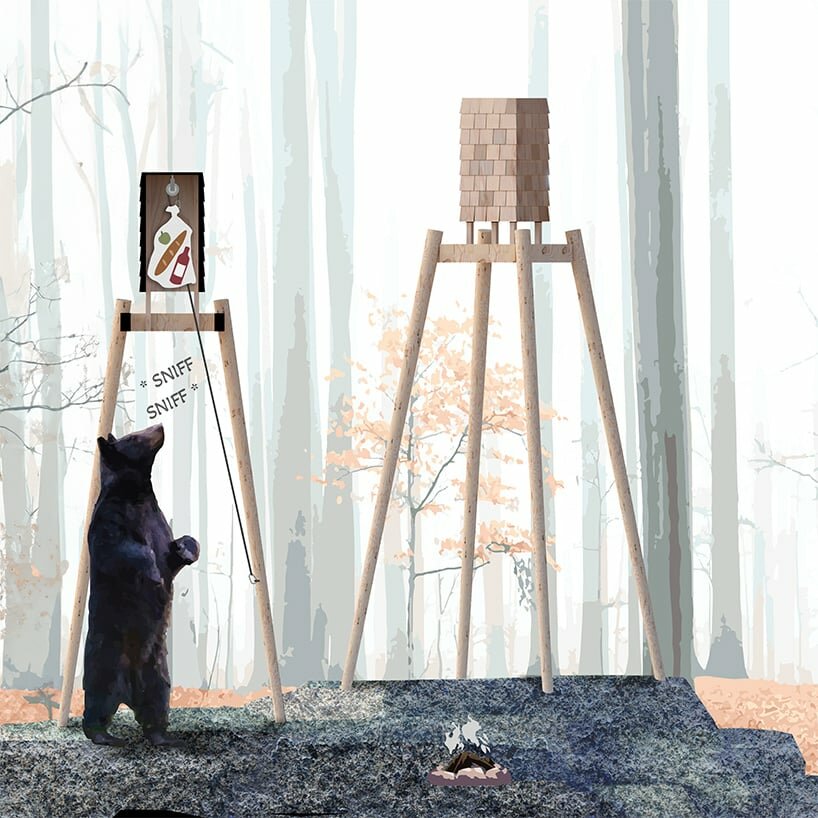
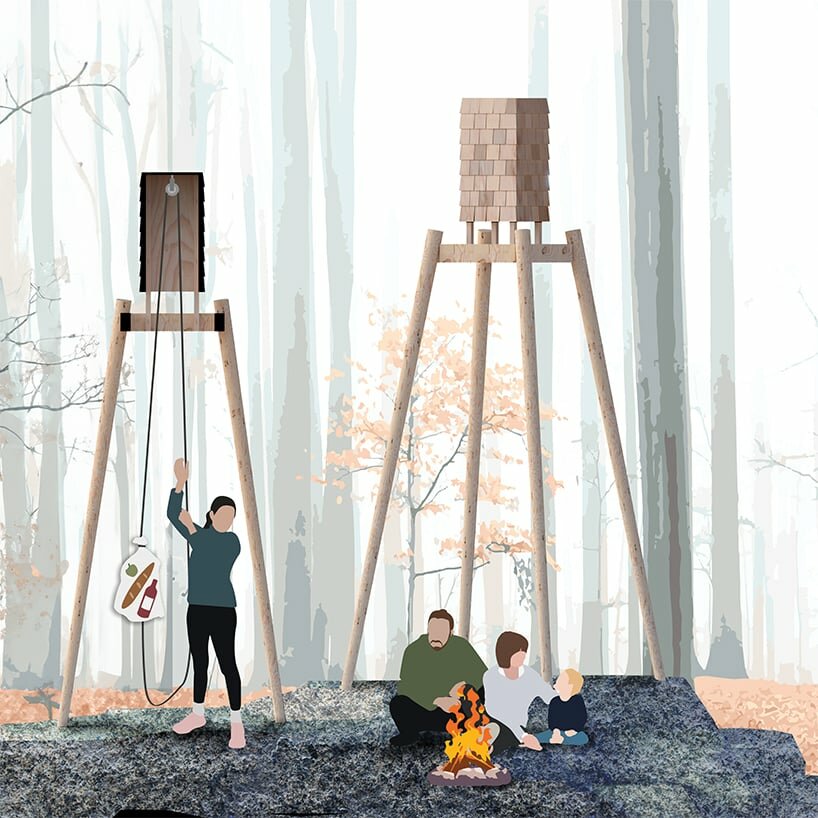
project info:
name: Deadwood Bear Cache
designer: Regan Appleton
location: British Columbia, Canada
designboom has received this project from our DIY submissions feature, where we welcome our readers to submit their own work for publication. see more project submissions from our readers here.
edited by: ravail khan | designboom
